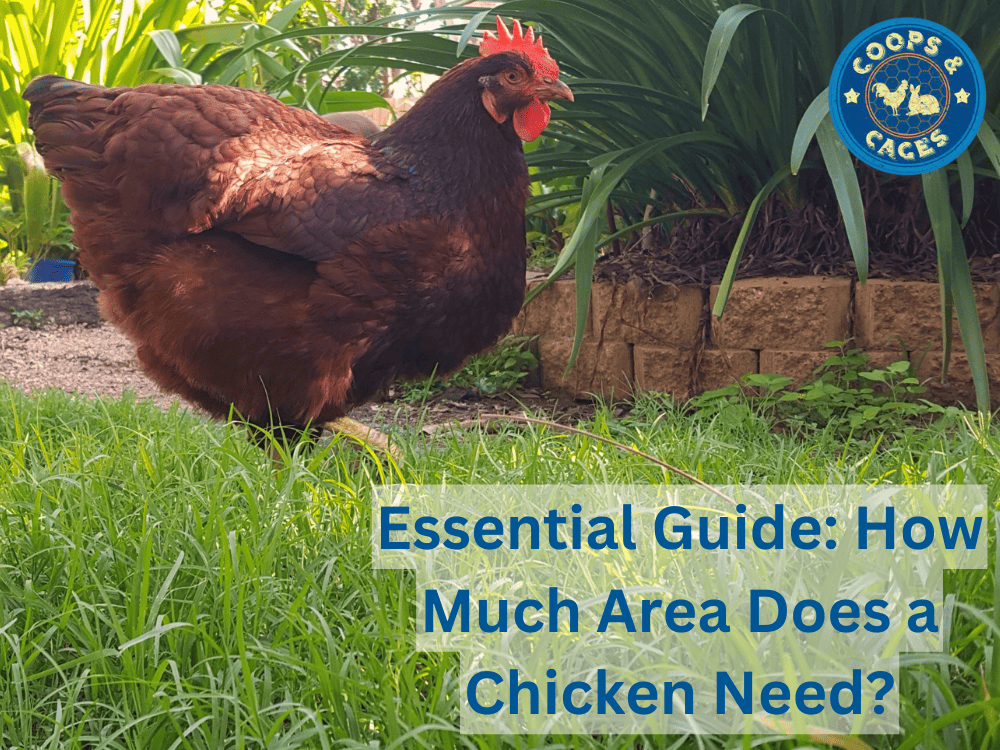Ever found yourself pondering ‘How much area does a chicken need’. Let’s take a closer look at the complexities of chicken space requirements.
In our journey together through the intriguing world of poultry care, we’ll dive into the nitty-gritty of chicken space requirements.
Imagine giving your feathery friends enough room to stretch their wings and peck about freely; that’s what they need for optimal health and happiness.
From understanding why adequate space is essential, right down to avoiding common pitfalls in allocating it – this post has got you covered!
We’re going on an adventure that promises practical tips and crucial knowledge straight from my years spent raising chickens – so come along as we learn just how much area does a chicken need!
- Understanding the Importance of Space for Chickens
- Factors Influencing Space Requirements for Chickens
- Indoor Housing Space Requirements for Chickens
- Outdoor Housing Space Requirements for Chickens
- Regulatory Guidelines on Chicken Housing Space
- Common Mistakes in Allocating Chicken Space
- Practical Tips for Providing Adequate Chicken Space
- Impact of Inadequate Space on Chicken Welfare
- FAQs in Relation to How Much Area Does a Chicken Need
- Jordan’s Wrap
Understanding the Importance of Space for Chickens
The right amount of space is vital to a chicken’s health and productivity. Like us, chickens need room to move around, stretch their wings, and perform natural behaviours like dust bathing and pecking.
Ensuring you have the appropriate chicken coop size is not only beneficial for chicken’s physical wellbeing, but it also helps to keep them mentally engaged.
Crowded conditions can lead to stress in chickens which can trigger aggressive behaviour such as feather pulling or cannibalism. It may also increase the risk of disease spread if one bird gets sick.
Adequate space contributes significantly towards better egg production too. A comfortable hen will lay more eggs than one under stress from cramped living conditions.
Factors Influencing Space Requirements for Chickens
The amount of space a chicken needs depends on several factors. First off, the breed plays a significant role. Larger chicken breeds like Orpingtons need more room than smaller ones such as Bantam chickens.
Secondly, the purpose of keeping chickens matters too. Layers typically need less space compared to broilers or meat chickens due to their different activity levels and sizes.
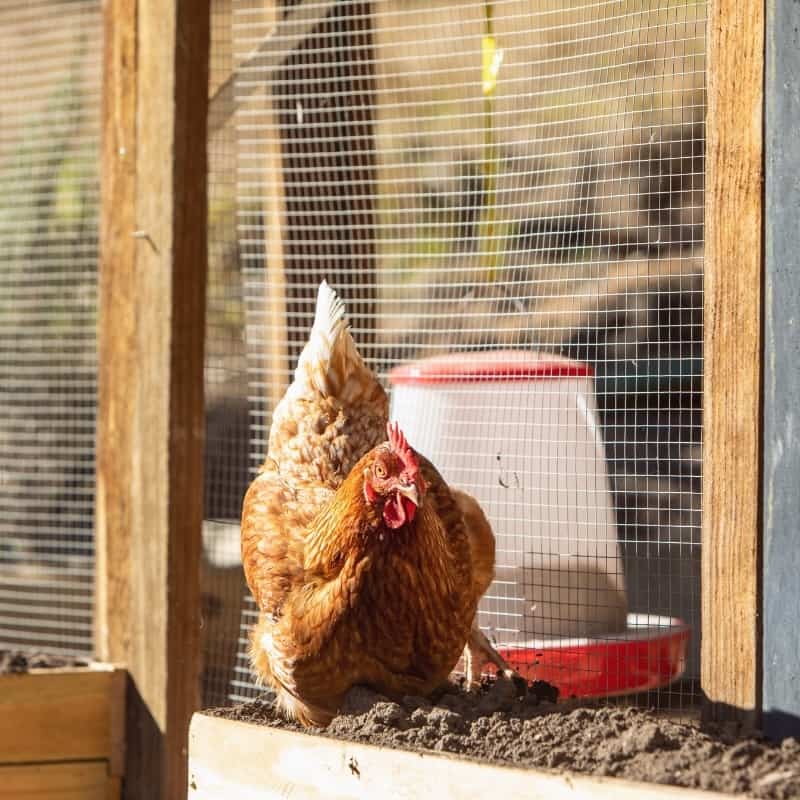
Last but not least is age. Young chicks can do with limited space, but as they grow into pullets and then hens or roosters, their space requirements increase accordingly.
Indoor Housing Space Requirements for Chickens
When it comes to space inside chicken coops, space is key. Each bird needs at least 3-4 square metres in a coop or barn setting. This allows them enough room to move around freely and express natural behaviours.
Nesting boxes
It’s a good idea to allocate one chicken nesting box for every 4-5 hens. Ensure that the nesting boxes are situated in a quiet and private area to encourage egg-laying.
Perch Space
Provide at least 8-10 inches of perch space per chicken. Chickens naturally roost at night, and having enough perch space helps prevent crowding and allows them to roost comfortably.
Enrichment and Ample Space for Movement
Include environmental enrichment items, such as dust baths, and ensure there is enough space for chickens to move around comfortably during inclement weather or at night when they are inside the coop.
Perches and Roosting Bars
Install perches and roosting bars at varying heights inside the chicken coop to accommodate the natural pecking order of the flock. This helps prevent bullying and ensures that each chicken has adequate space to roost at night.
But remember, this is just the minimum. More space can mean happier chooks.
If you’re keen on boosting egg production or simply want your birds to be chirpy, consider giving them more room in their hen house.
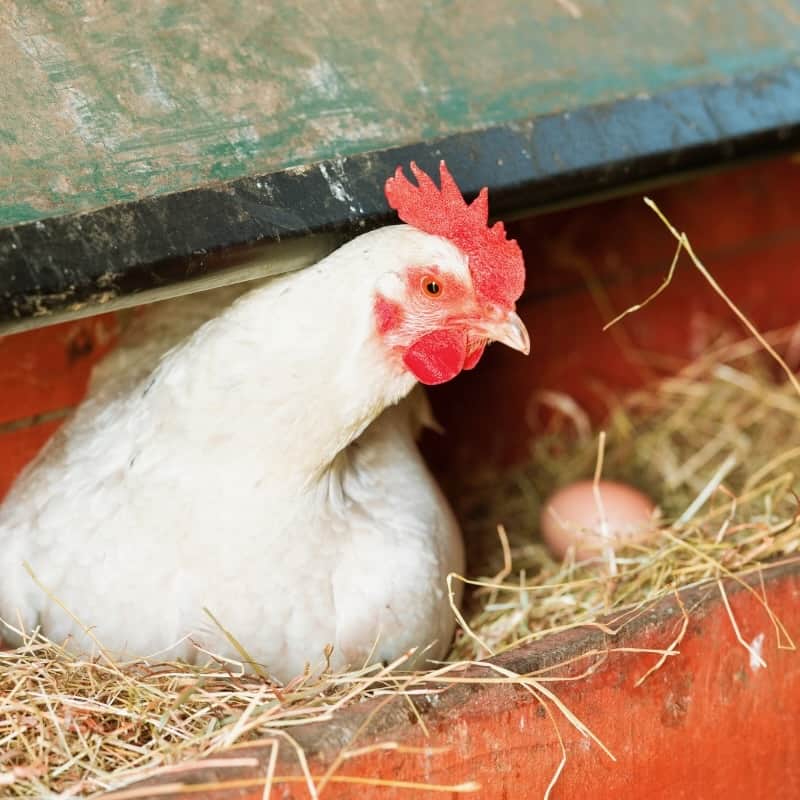
Outdoor Housing Space Requirements for Chickens
Chickens relish the outdoors, but how much space do they actually need? A general rule of thumb is to allocate about 3-4 square feet per chicken in a run or yard.
This allows them room to scratch, peck and carry out other natural behaviours. But remember, more floor space is always better. The breed can also affect this – larger breeds will need more room than smaller ones.
Adequate outdoor space helps prevent problems like feather picking and aggression due to overcrowding. It is essential for their psychological and physical well-being.
Coops and Cages has plenty of options if you’re looking to expand your flock’s outdoor living area.
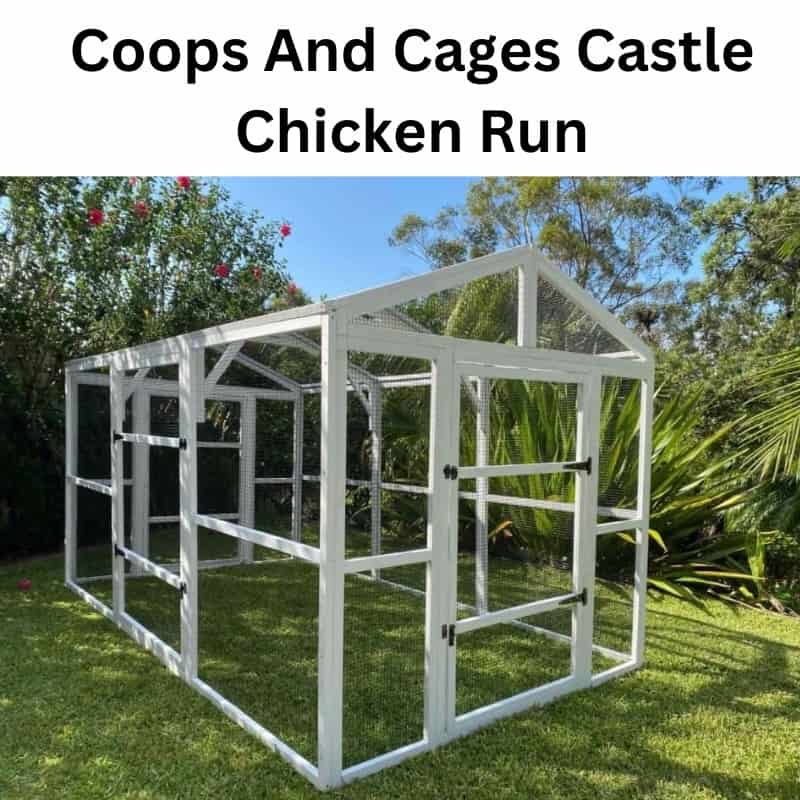
Regulatory Guidelines on Chicken Housing Space
Knowing the recommended chicken housing space is vital for their welfare.
Different regions have varying regulations, but generally, a rule of thumb suggests each bird needs about 3-4 square feet in a coop and around 1.5 square meters if they are free-ranging.
For instance, the Australian Model Code of Practice stipulates that laying hens should get at least 15-20 chickens per square meter, depending on whether it’s a cage or barn system.
Always check local guidelines to make sure you’re providing adequate space for your flock.
Common Mistakes in Allocating Chicken Space
Mistaking space needs for chickens is a common error, often leading to cramped coops.
Ignoring Breed Specific Needs
One key blunder is treating all breeds equally; larger chicken breeds need more room than smaller bantams.
Inadequate Indoor Space
Focusing only on outdoor space and neglecting the need for sufficient indoor coop space. Chickens need adequate inside space to roost and nest.
Neglecting Age-Related Changes
Not adjusting space requirements as chickens grow from chicks to adults. If you are purchasing baby chicks, ensure your chicken coop will provide enough room once they are fully grown too.
Failure to Account for Behavioural Traits
Not considering the natural behaviours of chickens, such as scratching, dust bathing, and foraging in the run space.
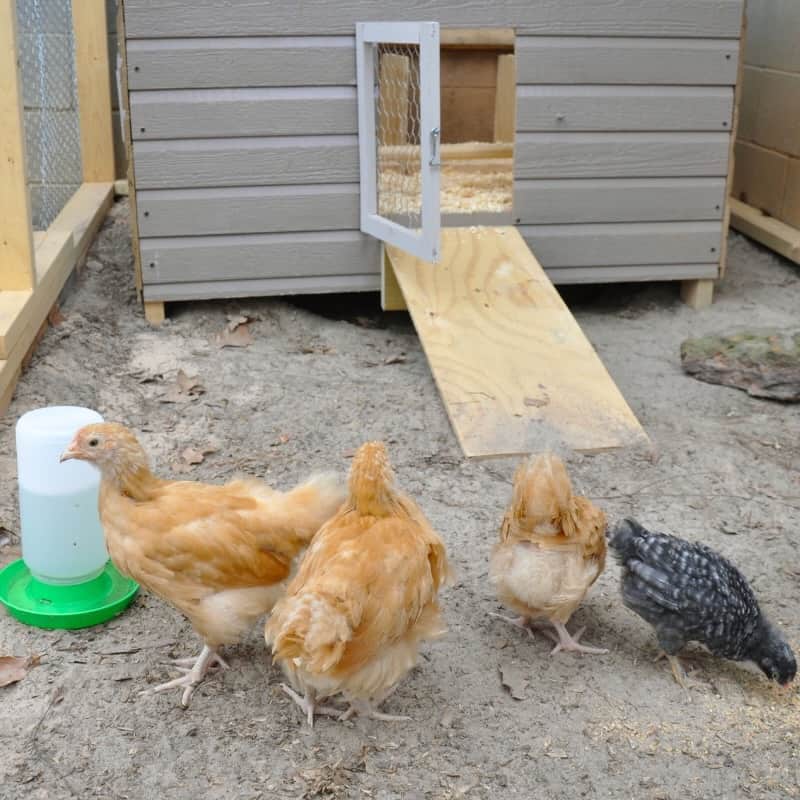
Practical Tips for Providing Adequate Chicken Space
Making sure your chooks have enough room to move about is vital. Calculate the dimensions of your coop or run, then divide by the amount of chickens you possess to get an estimation of how much area each bird has.
This will give you a rough idea of how much space each bird has. If this figure falls short of recommended guidelines, consider expanding their living quarters.
A handy tip to optimise space usage is introducing vertical elements like perches and roosting spaces. Chickens love exploring heights, so these additions can significantly enhance their environment without needing more ground area.
Coops and Cages offers a variety of chicken enclosures that can help ensure adequate space for your feathered friends.
Impact of Inadequate Space on Chicken Welfare
When chickens don’t possess sufficient area, it can have serious repercussions. Crowded housing can lead to increased stress and anxiety, as well as an elevated risk of disease transmission.
In a crowded coop, pecking order disputes become more common leading to injuries. Chickens need room to move freely for their mental well-being and overall health.
Studies show that inadequate space can even affect egg production rates negatively. So make sure your feathered friends get the area they need.
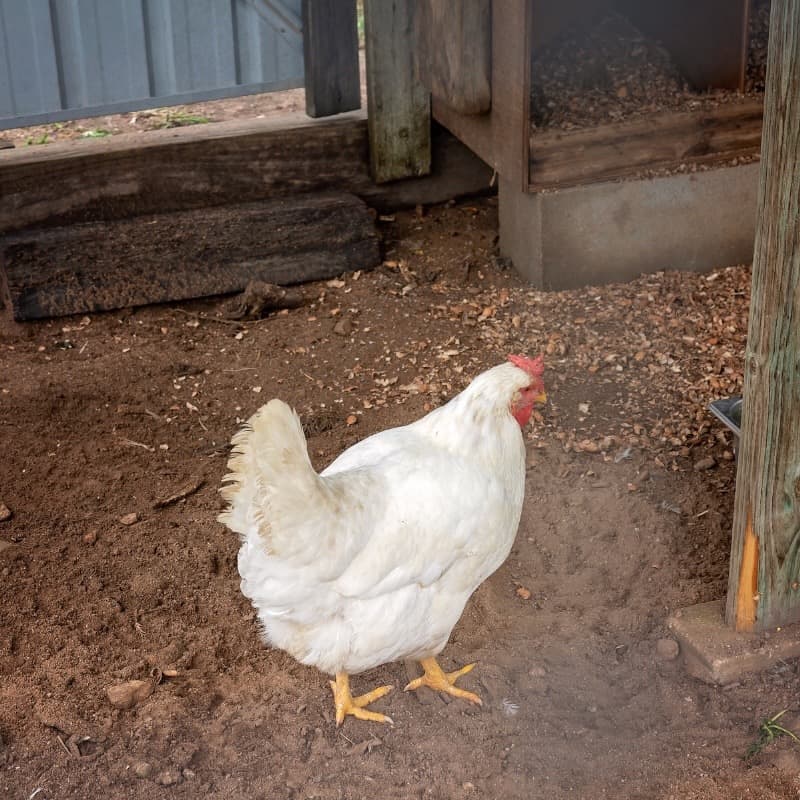
FAQs in Relation to How Much Area Does a Chicken Need
How Much Space Does A Chicken Need In Metres?
A typical chook needs a bare minimum of 0.37 square metres for coop space and around 1-2 square metres for outdoor roaming.
How Big Of An Area Per Chicken?
The general rule is roughly 2-3 square feet per bird inside the coop, but outside they’ll appreciate having closer to eight square feet each.
How Much Space Do You Need For Backyard Chickens In Australia
According to the RSPCA, a minimum space of 3-4 square feet is legally required per chicken for movement. However, it is recommended to provide each chicken with a more spacious 4-5 square feet to ensure their comfort.
How Much Room Do I Need For Chicken?
You’d want approximately 2-3 square feet per hen in the house and up to ten in their run if possible.
Jordan’s Wrap
In conclusion, understanding how much area does a chicken need, and meeting the space requirements of chickens are fundamental aspects of responsible and sustainable chicken ownership.
Providing adequate space is not just a legal requirement but also a key factor in ensuring the health, well-being, and productivity of your flock.
A holistic approach that ensures the appropriate coop size, sufficient nesting boxes, and consideration for the specific needs of different chicken breeds is essential when coop planning.
Ultimately, a well-thought-out approach to chicken space management leads to happier, healthier birds and a more successful chicken keeping experience.



